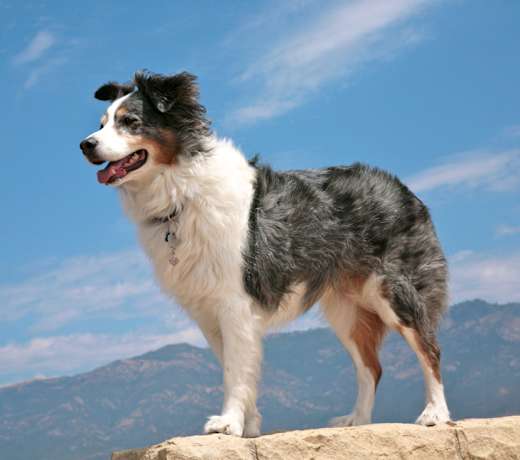Australian Cattle Dogs typically stand between 17 to 20 inches tall at the shoulder and generally weigh between 31 and 53 pounds, with males being slightly larger than females.
Australian Cattle Dog
Breed Type: Herding
Common nicknames: Aussie, ACD, Blue Heeler, Queensland Heeler
Coat: Smooth, double
Hypoallergenic: No, they will likely trigger allergies.
Temperament: Loyal, protective, energetic, playful
Life expectancy: 12-16 years
Color & patterns:
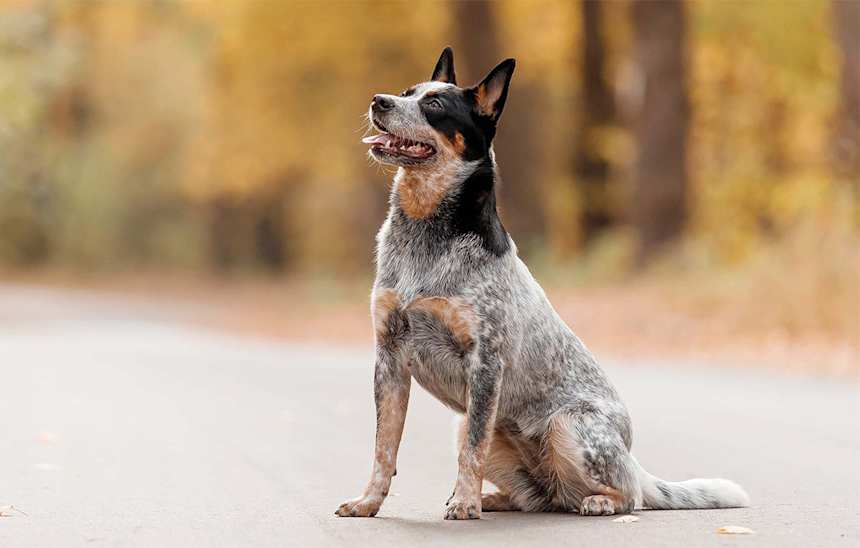
Australian Cattle Dogs, also known as “Blue Heelers” or “Queensland Heelers,” may be medium-sized, but their energy levels are off the charts. Originally bred in Australia for herding cattle, these Energizer Bunnies are constantly on the move and ready to take on any challenge. Their high energy levels and endurance are ideal for active individuals and families who enjoy outdoor adventures. They’re not just about brawn, though — Australian Cattle Dogs have brains to match. Their intelligence and quick learning abilities make them masters of various activities and sports. These dogs are also known for their unwavering loyalty and incredible work ethic. So, if you’re seeking a spirited sidekick who can keep up with your active lifestyle and engage you with their clever antics, the Australian Cattle Dog is the perfect choice to light up your days with laughter and endless fun.
Australian Cattle Dog characteristics
Learn about about Australian Cattle Dog basics like their fur colors, shedding levels, how much grooming they need, and other Australian Cattle Dog facts.
Average height
17-20 inches (43.2-50.8cm)
Average weight
31-53 pounds (14.1-24.0 kg)
Average lifespan
12-16 years
Exercise needs
Grooming needs
Full-grown size
Good with cats
Good with kids
Training aptitude
Do Australian Cattle Dogs shed?
Yes, Australian Cattle Dogs shed. They have a short double coat that sheds moderately year-round and more heavily during seasonal changes. Occasional brushing, about once or twice a week, can help minimize shedding and will do right by this breed.
Do Australian Cattle Dogs have tails?
Yes, Australian Cattle Dogs have tails. Their tails are usually medium-length, carried low, and slightly curved upwards at the end.
Do Australian Cattle Dogs have webbed feet?
No, Australian Cattle Dogs don’t have fully webbed feet like some breeds, but their paws are well-suited for their working environment. Their feet are strong and compact, helping them easily navigate various terrains.
What does an Australian Cattle Dog look like?
An Australian Cattle Dog typically has a muscular build with a medium-sized frame. They often have a short, double coat that can come in blue or red-speckled patterns. Their ears are usually pricked and alert, giving them an attentive expression.
What is an Australian Cattle Dog?
An Australian Cattle Dog is a dog breed known for their agility and intelligence. They typically have blue or red-speckled coats and are medium-sized with a strong build.
How long do Australian Cattle Dogs live?
Australian Cattle Dogs typically live between 12 to 15 years. Individual lifespans, however, can vary based on factors such as genetics, diet, exercise, healthcare, and overall lifestyle. Providing proper care, regular veterinary check-ups, a balanced diet, and maintaining a healthy weight can contribute to helping the Australian Cattle Dog live a long and healthy life.
When do Australian Cattle Dogs stop growing?
Australian Cattle Dogs reach their full-grown height by the time they are around one year old. However, they may continue to fill out and develop muscle mass until they are about two years old.
It’s important to provide proper nutrition, exercise, and healthcare during their growth stages to ensure they develop into healthy adult dogs. Regular veterinary check-ups can also help monitor their growth and overall well-being.
Is a Blue Heeler and an Australian Cattle Dog the same?
Yes, a Blue Heeler is just another name for an Australian Cattle Dog. Both terms refer to the same breed, known for their distinctive blue or red speckled coat and strong working abilities.
Australian Cattle Dog history
Learn about where the Australian Cattle Dog came from.
What were Australian Cattle Dogs bred for?
Australian Cattle Dogs were originally bred to herd livestock, particularly cattle, over long distances. Their endurance and alertness make them well-suited for this demanding work.
Where are Australian Cattle Dogs from?
Australian Cattle dogs originate from Australia. In the mid-1800s, Australian Cattle Dogs were created by intermixing Blue Merle Smooth Highland Collies, Australian Dingos, and possibly Dalmatians and Bull Terriers (though those two are heavily disputed) in order to create a new breed that could have the strength to drive stock over long distances with stamina for Australia’s intense heat.
Australian Cattle Dog temperament
Learn about about the Australian Cattle Dog temperament and how well they fit into your lifestyle, home environment, and family.
Are Australian Cattle Dogs good with kids?
Yes, Australian Cattle Dogs can be good with kids. They are energetic and playful, which can make them great playmates for older children. However, due to their herding instincts, they may try to herd younger children by nipping at their heels, so, as with any breed, it is recommended that your child is always supervised when interacting with your Australian Cattle Dog to keep both the child and dog safe.
Teaching children how to approach and handle dogs of all breeds properly is crucial to ensure positive experiences for both the dog and the child, as is teaching dogs how to interact gently with children.
Are Australian Cattle Dogs aggressive?
No, Australian Cattle Dogs are not inherently aggressive. However, they are protective and can be wary of strangers, which may come across as aggression if not properly managed. Early socialization, proper training, and positive experiences can help prevent any aggressive tendencies from developing.
If you are concerned by any signs of aggression or reactivity in your dog, be sure to address it promptly with the help of a professional trainer or behaviorist. Pain, discomfort, or underlying medical conditions can sometimes contribute to changes in a dog’s behavior, so it may also be worth visiting a vet to rule out their health as a cause for signs of aggressive behavior.
Are Australian Cattle Dogs easy to train?
Yes, Australian Cattle Dogs can be easy to train as they are intelligent and eager to please, but they can also be independent and stubborn. Training any dog takes substantial time and effort, regardless of breed, and consistency, positive reinforcement, and early socialization are key to successful training. With the right approach, Australian Cattle Dogs can excel in obedience training and even participate in various dog sports.
Do Australian Cattle Dogs bark a lot?
Yes, Australian Cattle Dogs can be prone to barking. Training and proper socialization can play a significant role in managing an Australian Cattle Dog’s barking tendencies; many dogs bark when they’re bored or not properly stimulated. Providing them with mental and physical stimulation can also help reduce boredom-related barking.
Are Australian Cattle Dogs good family dogs?
Yes, Australian Cattle Dogs can be great companions for active families. They are loyal and protective, making them good watchdogs. However, their high energy levels and need for mental stimulation mean they are best suited for families who can provide plenty of exercise and enrichment.
Are Australian Cattle Dogs good with other dogs?
Yes, Australian Cattle Dogs are good with other dogs, especially if they are socialized from a young age. However, their strong herding instincts can sometimes lead to conflicts with other dominant dogs. Proper introductions and training can help ensure they interact well with other canines.
Are Australian Cattle Dogs smart?
Yes, Australian Cattle Dogs are considered one of the smartest dog breeds out there. They are quick learners and excel in tasks that require problem-solving and decision-making. Their intelligence, combined with their high energy levels, makes them well-suited for challenging activities and jobs.
Do Australian Cattle Dogs like water?
Yes, many Australian Cattle Dogs like water and can be quite fond of swimming, especially when introduced to it at a young age. Their active nature means they often appreciate any opportunity to cool off and have fun in the water.
Are Australian Cattle Dogs affectionate?
Australian Cattle Dogs are not as affectionate as some other breeds but are known for being loyal and devoted to their families. They often form strong bonds with their pet parents and enjoy spending time with them.
Are Australian Cattle Dogs good indoor dogs?
Yes, Australian Cattle Dogs can be good indoor dogs, but they are best suited for homes with access to outdoor space to burn off their energy. While they can adapt to living indoors, their high energy levels mean they need plenty of opportunities to run, play, and exercise to stay happy and healthy.
Do Australian Cattle Dogs make good service dogs?
Yes, Australian Cattle Dogs can excel in service roles such as search and rescue, therapy work, or assistance tasks for people with disabilities. Their intelligence, trainability, and strong work ethic make them well-suited for these types of jobs. However, their high energy levels and strong herding instincts mean they may not be the best fit for all service roles. It’s essential to match their skills and temperament with the specific requirements of the job to ensure their success as service dogs.
Are Australian Cattle Dogs good with cats?
Australian Cattle Dogs can coexist with cats, but their herding instincts may still lead them to chase or try to herd cats, so it’s essential to monitor their interactions. Of course, each dog (and cat) has their own personality and temperament but early socialization and training can help them learn to live peacefully with cats.
Are Australian Cattle Dogs good for apartments?
Australian Cattle Dogs can adapt to apartment living, but it’s not always the ideal environment for them. These pups are energetic and require plenty of exercise and mental stimulation to stay happy and healthy. If you live in an apartment, you’ll need to commit to providing them with a lot of regular exercise and enrichment to prevent boredom and destructive behaviors. A home with a fenced yard where they can run and play would be more suitable for their active lifestyle.
Are Australian Cattle Dogs high energy?
Yes, Australian Cattle Dogs are high-energy dogs. These energetic dogs require frequent exercise, such as long walks, runs, or play sessions, to keep them physically and mentally engaged. They would also do well in activities like agility, obedience, and herding trials, and they’re happiest when they have a job to do or at least plenty of exercise to burn off their energy.
Australian Cattle Dog health
Learn about about the Australian Cattle Dog health outlook and what diseases they may be prone to at various stages of their life.
Do Australian Cattle Dogs have health problems?
Australian Cattle Dogs can be prone to certain health issues, some of the most common of which include: hip dysplasia, progressive retinal atrophy, and deafness.
Hip and/or elbow dysplasia: Hip and elbow dysplasia are two of the most common skeletal diseases seen in dogs. They are similar diseases in which either the hip or elbow joint has grown abnormally or is misshapen. The abnormal shape prevents the joints and sockets from adequately meeting one another, resulting in rubbing and grinding instead of sliding smoothly. Though the main complication with hip dysplasia is joint instability, the abnormalities present in elbow dysplasia often result in pieces of bone and/or cartilage breaking loose and irritating the joint tissues. Over time, the rubbing from dysplasia can cause a variety of issues, such as pain, lameness, and secondary osteoarthritis. Surgery can be done to fix the joint if diagnosed before the onset of arthritis. If you are rescuing an Australian Cattle Dog, have them checked out by a vet to see if they have or are prone to getting dysplasia, so you know what they will be able to handle regarding activities and exercise.
Progressive retinal atrophy: Australian cattle dogs may also develop Progressive retinal atrophy (PRA), a progressive degenerative disease affecting the retina that eventually leads to blindness and persistent pupillary membranes, where remnant strands of fetal tissue cross over the iris.
Lens luxation: A type of dislocation that occurs when the support ligaments of the lens (a sphere-shaped area of the eye that focuses light on the retina) weaken or break. The weakening of the ligaments causes the lens to dislocate from its normal position. When the lens falls forward, it prevents proper drainage of fluid from the eye and can lead to glaucoma. The condition is also very painful and can cause blindness if the luxation is not surgically fixed.
Deafness: Cattle Dogs are also prone to congenital hereditary sensorineural deafness (CHSD), a condition present at birth and inherited through genetic factors that affect the sensory cells in the inner ear, leading to deafness. This condition can be unilateral (affecting one ear) or bilateral (affecting both ears), and female dogs are at higher risk.
Responsible breeding practices and regular veterinary check-ups can help mitigate these risks.
Are Australian Cattle Dogs hypoallergenic?
No, Australian Cattle Dogs are not hypoallergenic. They have a short double coat that sheds, which can release allergens into the environment. If someone in your household has allergies, you may want to consider another breed or take extra precautions to manage allergens.
How much exercise does an Australian Cattle Dog need?
Australian Cattle Dogs require a significant amount of daily exercise to stay healthy and happy. These high-energy dogs typically need at least 60 minutes of vigorous exercise each day, such as brisk walks, runs, or play sessions. Additionally, mental stimulation such as puzzle toys, training sessions, or interactive games can help keep their minds sharp and prevent boredom. Regular exercise is essential to prevent behavioral issues and ensure they maintain a healthy weight.
How often should you bathe an Australian Cattle Dog?
Australian Cattle Dogs don’t require frequent baths; generally, bathing them every two to three months or as needed is sufficient. This breed has a short, double coat that is relatively easy to maintain and over-bathing can strip their coat of its natural oils, leading to dryness and irritation.
Do Australian Cattle Dogs need haircuts?
No, Australian Cattle Dogs do not need haircuts. That thick double coat is their built-in climate control, keeping them comfy in both hot and cold weather. Cutting their fur can disrupt their natural insulation and temperature regulation. And their fur might not grow back the same way, which causes ongoing problems.
Popular Australian Cattle Dog mixes
Breeds that are commonly mixed with Australian Cattle Dogs include the American Eskimo Dog, American Pit Bull Terrier, and Basset Hound. Characteristics of an Australian Cattle Dog mix can vary widely depending on the specific breeds involved, the individual dog’s genetics, and its upbringing. A few common Australian Cattle Dog mixes include:
Aussimo (Australian Cattle Dog + American Eskimo Dog)
Pit Heeler (Australian Cattle Dog + American Pit Bull Terrier)
Basset Heeler (Australian Cattle Dog + Basset Hound)
Boston Cattle Dog (Australian Cattle Dog + Boston Terrier)
Cattle Collie Dog (Australian Cattle Dog + Collie)
Cattle Shepherd (Australian Cattle Dog + German Shepherd)
Ausky (Australian Cattle Dog + Siberian Husky)
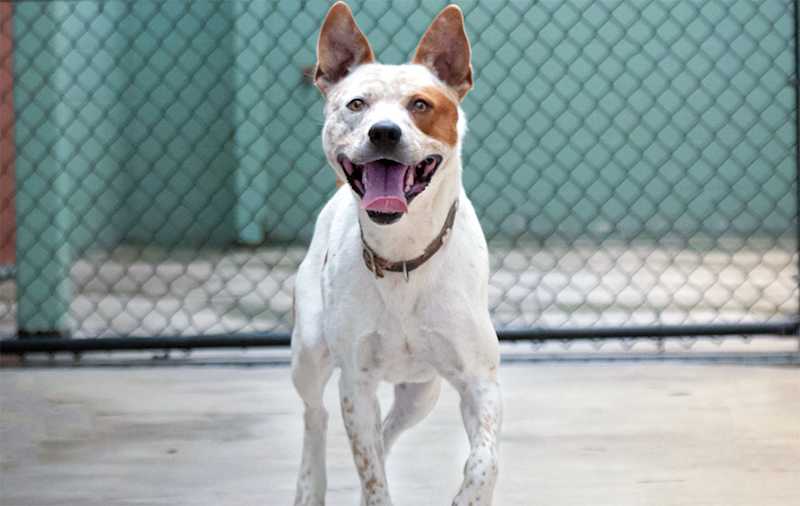
Find Australian Cattle Dog puppies near you
Adopting an Australian Cattle Dog
Learn about acquiring an Australian Cattle Dog - the pros and cons of adopting versus going through a breeder, and associated costs.

Opal
Australian Cattle Dog
Female, 5 yrs 10 mos
Los Angeles, CA
Good with dogs
Needs special attention
Needs experienced adopter
House-trained
Spayed or Neutered
Shots are up-to-date
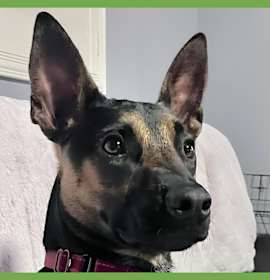
Scooby
Australian Cattle Dog Belgian Malinois
Male, 2 yrs
Los Angeles, CA
Not good with cats
House-trained
Spayed or Neutered
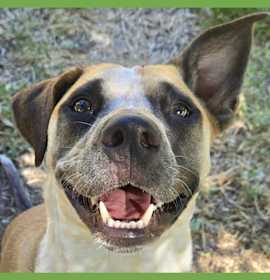
Goose
Australian Cattle Dog Black Mouth Cur
Female, 2 yrs 8 mos
Los Angeles, CA
Needs experienced adopter
House-trained
Spayed or Neutered
Shots are up-to-date
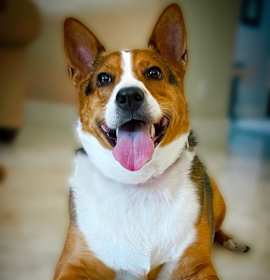
Macks
Cattle Dog Shepherd (Unknown Type)
Female, 6 yrs 3 mos
Beverly Hills, CA
Not good with cats
House-trained
Spayed or Neutered
Shots are up-to-date

Dale
Blue Heeler Australian Cattle Dog
Male, young
Beverly Hills, CA
Spayed or Neutered
Shots are up-to-date
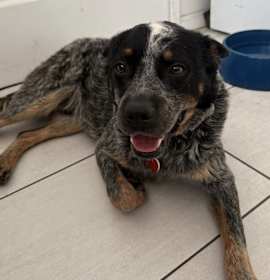
Chip
Blue Heeler Australian Cattle Dog
Male, young
Beverly Hills, CA
Good with dogs
Spayed or Neutered
Shots are up-to-date
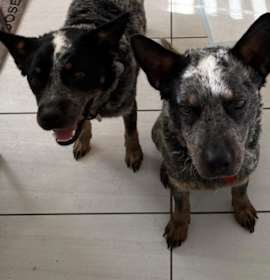
Chip and Dale
Blue Heeler
Male, young
Beverly Hills, CA
Spayed or Neutered
Shots are up-to-date
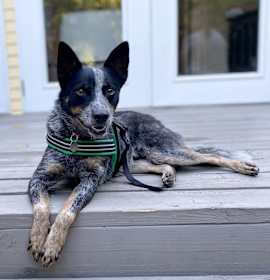
ASHER
Cattle Dog
Male, adult
North Hollywood, CA
Not good with dogs
Not good with cats
Needs experienced adopter
Spayed or Neutered
Shots are up-to-date

Opal
Australian Cattle Dog
Female, 5 yrs 10 mos
Los Angeles, CA
Good with dogs
Needs special attention
Needs experienced adopter
House-trained
Spayed or Neutered
Shots are up-to-date

Scooby
Australian Cattle Dog Belgian Malinois
Male, 2 yrs
Los Angeles, CA
Not good with cats
House-trained
Spayed or Neutered

Goose
Australian Cattle Dog Black Mouth Cur
Female, 2 yrs 8 mos
Los Angeles, CA
Needs experienced adopter
House-trained
Spayed or Neutered
Shots are up-to-date

Macks
Cattle Dog Shepherd (Unknown Type)
Female, 6 yrs 3 mos
Beverly Hills, CA
Not good with cats
House-trained
Spayed or Neutered
Shots are up-to-date

Dale
Blue Heeler Australian Cattle Dog
Male, young
Beverly Hills, CA
Spayed or Neutered
Shots are up-to-date

Chip
Blue Heeler Australian Cattle Dog
Male, young
Beverly Hills, CA
Good with dogs
Spayed or Neutered
Shots are up-to-date


